The Secret Invasion
6 /10 1 Votes6
Duration Country United States | 5.8/10 IMDb Genre Action, Drama, History Screenplay Robert Wright Campbell Writer R. Wright Campbell Language English | |||||||||||||||||||||||||||||||||
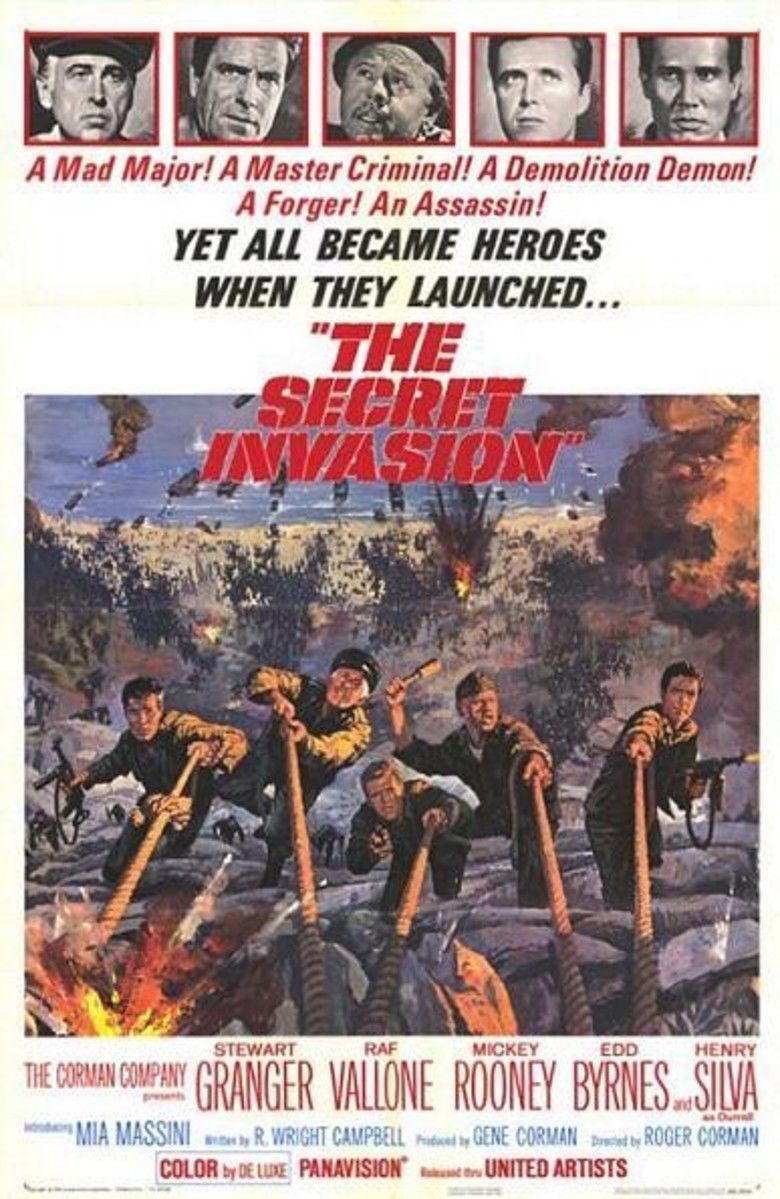 | ||||||||||||||||||||||||||||||||||
Release date September 16, 1964 (1964-09-16) Cast (Maj. Richard Mace), (Roberto Rocca), (Terence Scanlon), Edward Byrnes (Simon Fell), (John Durrell), William Campbell (Jean Saval)Similar movies Related Roger Corman movies | ||||||||||||||||||||||||||||||||||
The secret invasion trailer
The Secret Invasion is a 1964 American war film directed by Roger Corman. It stars Stewart Granger, Raf Vallone, Mickey Rooney, Edd Byrnes, Henry Silva, Spela Rozin and William Campbell. Appearing three years before The Dirty Dozen (1967), the film features a similar World War II mission where convicts are recruited by the Allies for an extremely hazardous operation behind enemy lines.
Contents
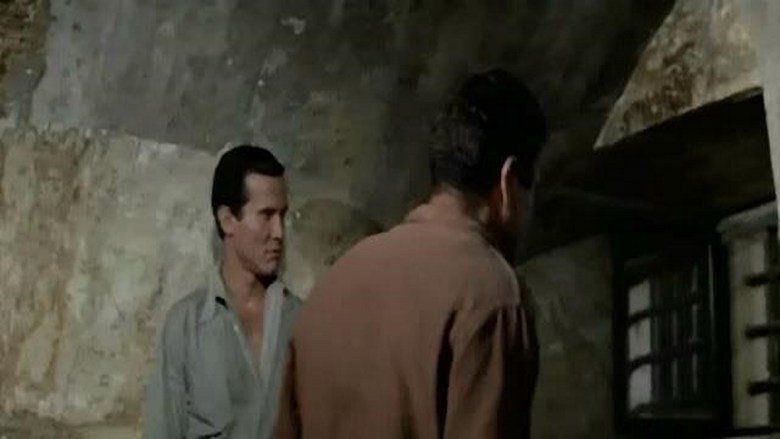
The secret invasion 1964 720p
Plot
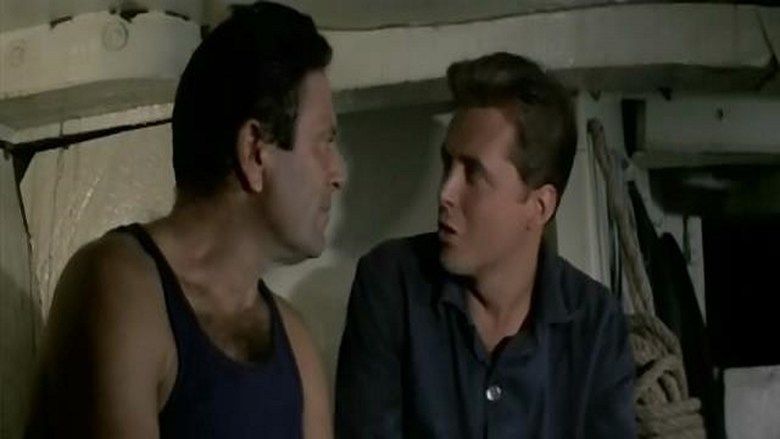
In 1943, British Intelligence in Cairo recruits criminal mastermind Roberto Rocca (Raf Vallone), demolitions expert and Irish Republican Army member Terence Scanlon (Mickey Rooney), forger Simon Fell (Edd Byrnes), cold-blooded murderer John Durrell (Henry Silva), and thief and impersonator Jean Saval (William Campbell) for a dangerous mission. The men are offered pardons in exchange for attempting to rescue an Italian general sympathetic to the Allies who is imprisoned in German-occupied Yugoslavia. The group is led by Major Richard Mace (Stewart Granger), who is trying to expiate his feelings of guilt for sending his own brother on a dangerous mission and waiting too long to extricate him. The fishing boat transporting Mace's team is stopped by a patrol boat, but they dispose of the Germans.
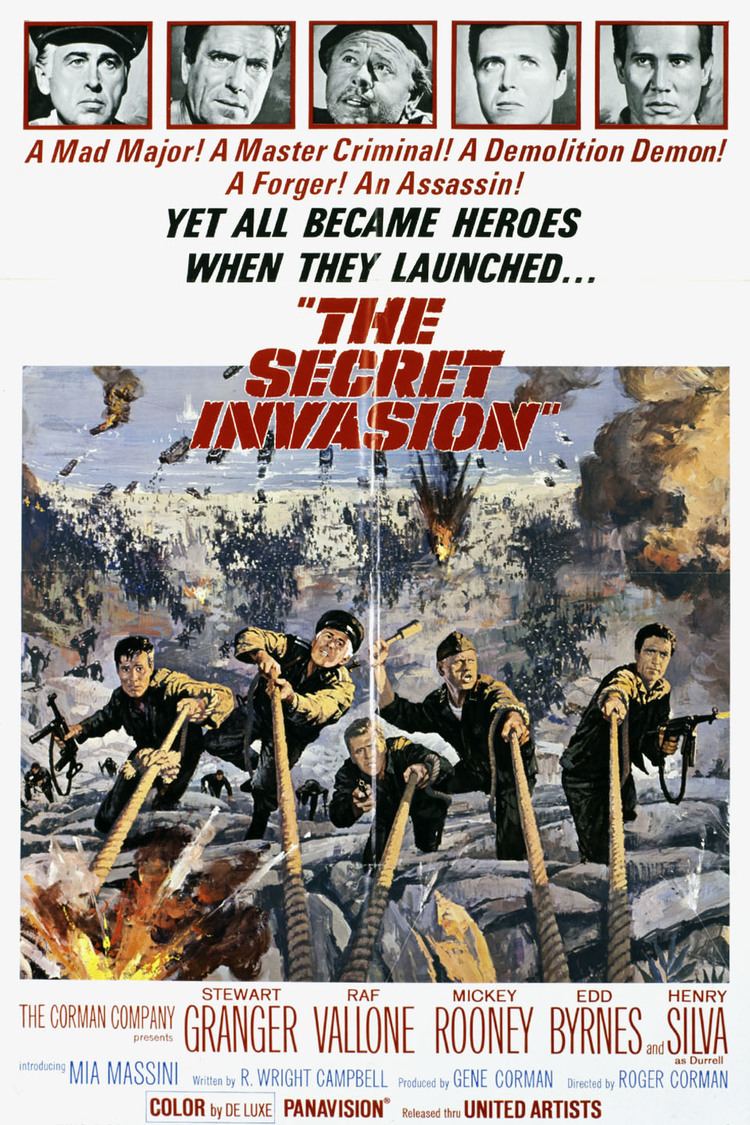
With the assistance of local partisans led by Marko (Peter Coe), they split up and enter Dubrovnik. Durrell is partnered with Mila (Spela Rozin), a recent widow with a baby. They are attracted to each other, but Durrell becomes extremely distraught when he accidentally smothers her crying child to avoid detection by a German patrol. The team is captured and taken to the same fortress where the Italian general is being kept. They are tortured for information, but manage to escape and fulfill their mission, although Mace, Mila, Fell, Scanlon and Saval are killed while fending off German troops.
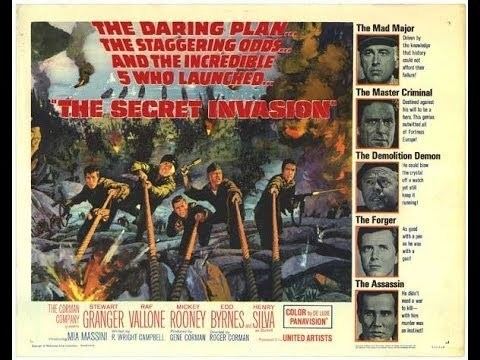
At the last minute, Rocca and Durrell discover that the man they have freed is an impostor, and he is about to exhort "his" troops to stay loyal to the Axis. Durrell pretends to be a Nazi fanatic and shoots the fake general; he is killed by the outraged Italians. Rocca, the last man standing, directs the Italians' anger to the Germans.
Production
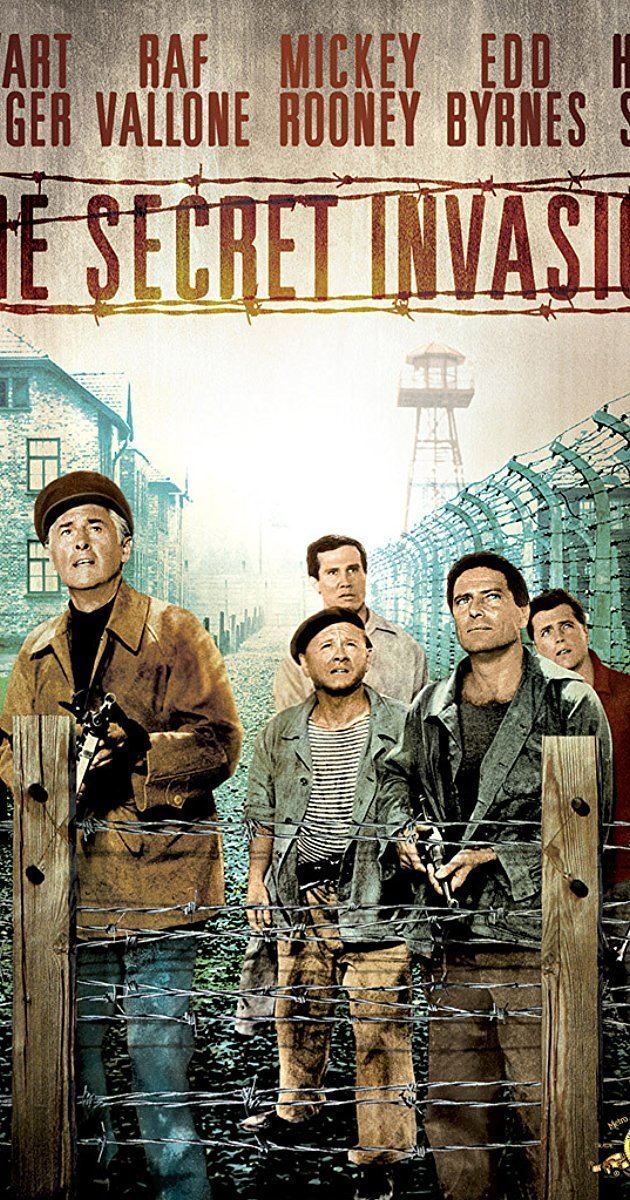
After turning out a treatment based on the locale of Dubrovnik, Roger Corman teamed with screenwriter R. Wright Campbell who had a project, Dubious Patriots about a wartime mission involving convicts. The script was taken over by producer David V. Picker at United Artists, who was able to leverage the screenplay into a well-financed studio production. With a budget of $600,000, more than twice more than he had for his earlier independently-funded features, Corman was able to start production in between his Edgar Allan Poe adaptations, The Masque of the Red Death and The Tomb of Ligeia (1964).
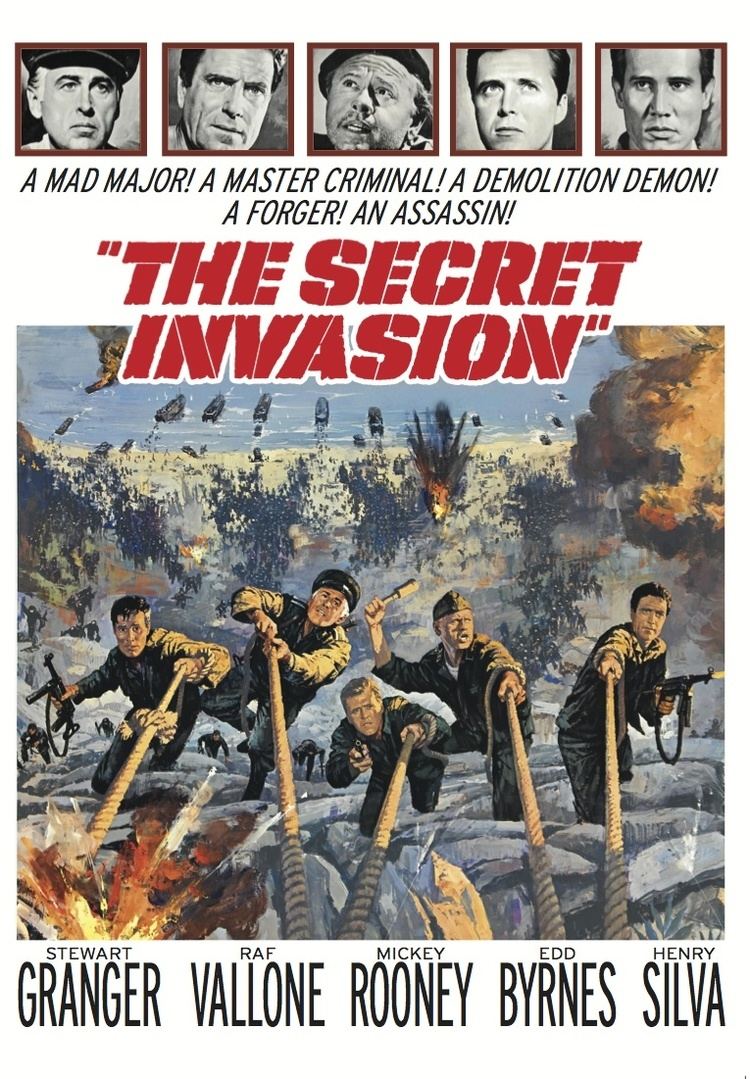
Principal photography under the working title of Dubious Patriots took place on location in Dubrovnik and other parts of Yugoslavia in the summer of 1963 for a typically short Corman shooting schedule of 36 days. With the assistance of the Yugoslavian government, a large number of military personnel and equipment were offered, but an earthquake threatened to delay the production when troops were siphoned off to help in the relief effort.
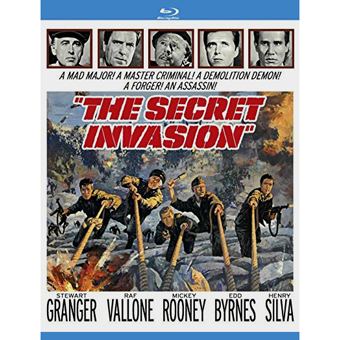
Corman's problems extended to not only wrangling military extras, but also to dealing with the emotions of a star like Stewart Granger "stooping" to make a "B film" and worrying that his role was not as prominent as the others in the ensemble cast. At one point, Corman actually rewrote his part "on the spot" so that Granger had more lines than Edd Byrnes, his co-star, who was a current popular television star.
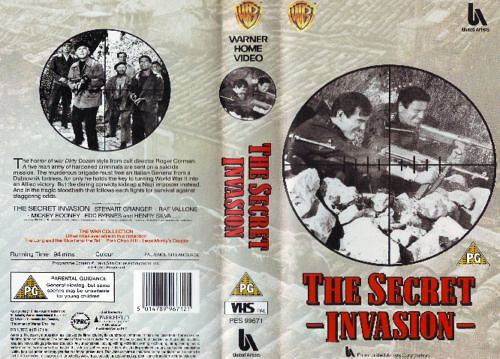
The production was photographed in Panavision with Eastmancolor film.
Reception
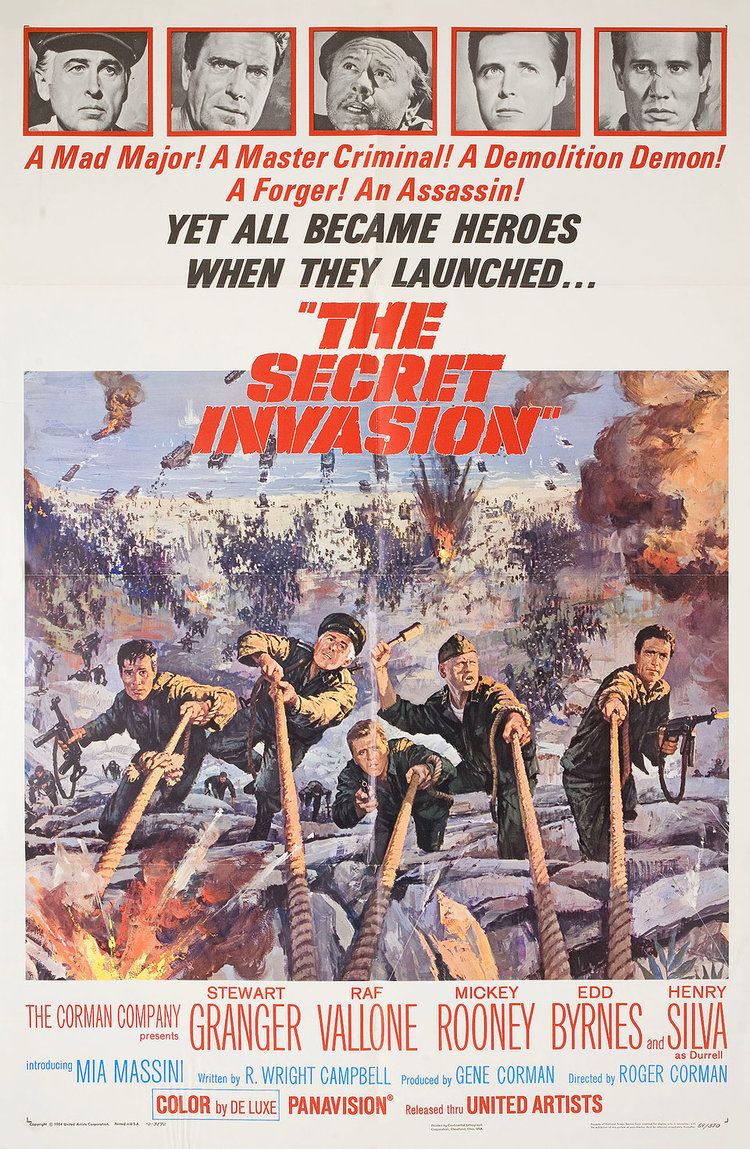
In a contemporary review of The Secret Invasion, The New York Times film reviewer Howard Thompson saw some positives in what was basically a "programmer":
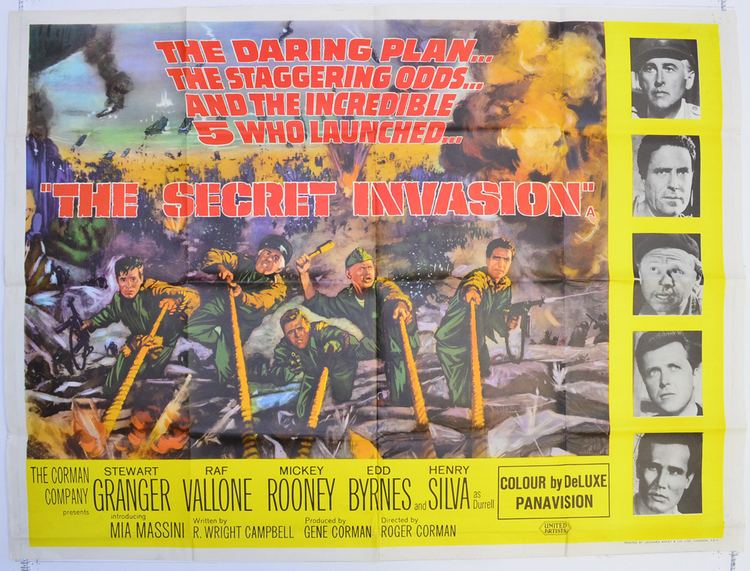
... a rather surprising amount of brisk muscularity and panoramic color, if not always credibility. The casting of this United Artists release, which arrived at the Criterion and other houses, may make some customers blink and wait for the worst ... But they, and the picture, do pretty well, considering.
In Brassey's Guide to War Films, film historian Alun Evans considered the production exemplified Corman's ability to "... create something out of nothing." He also noted that The Secret Invasion has some notoriety as "... the sawn-off antecedent of The Dirty Dozen."
References
The Secret Invasion WikipediaThe Secret Invasion IMDb The Secret Invasion themoviedb.org
